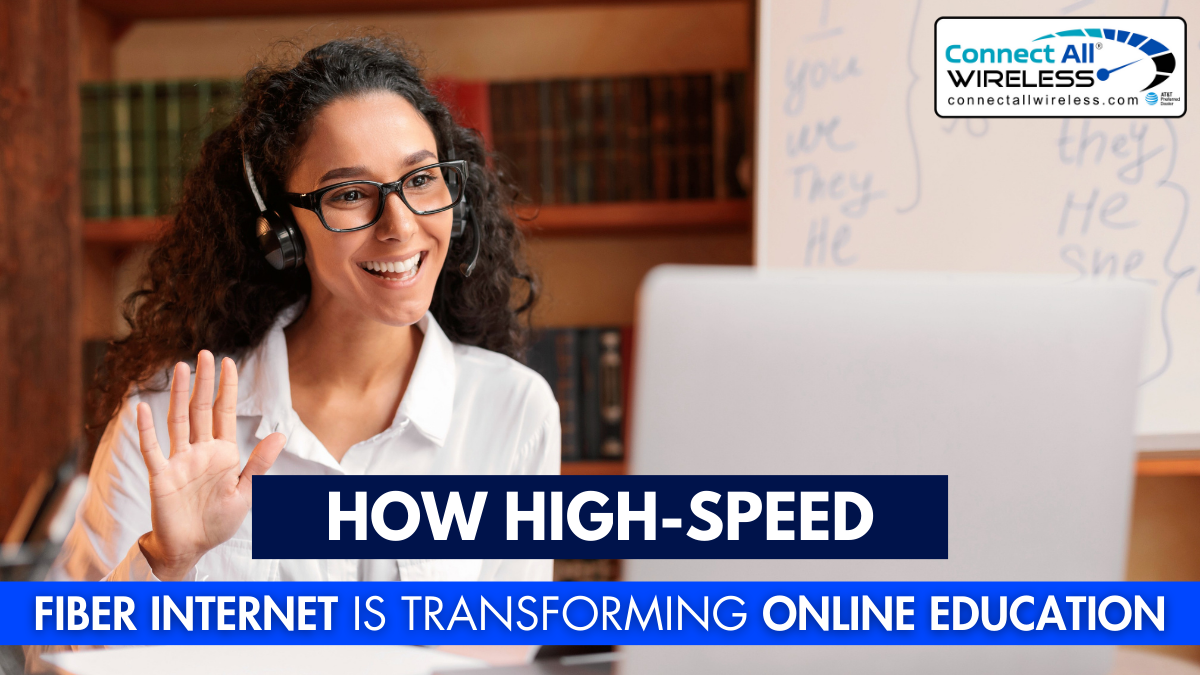How High-Speed Fiber Internet is Transforming Online Education
March 25, 2024In the digital age, the convergence of education and technology has paved the way for a revolution in learning. Among the myriad advancements, high-speed fiber internet stands out as a game-changer in transforming the landscape of online education. As educators and students increasingly rely on virtual platforms for teaching and learning, the significance of robust internet connectivity cannot be overstated. In this article, we delve into the profound impact of high-speed fiber internet on online education and how it is reshaping the way we teach and learn.
The Need for Speed
Online education hinges on seamless connectivity, where every click, video stream, or interactive session demands swift and uninterrupted transmission of data. Traditional internet connections often fall short in meeting these demands, leading to buffering, latency issues, and overall frustration for both educators and learners. High-speed fiber internet, however, addresses these challenges by offering lightning-fast speeds and unparalleled reliability.
With fiber-optic cables transmitting data at the speed of light, users experience minimal latency and virtually no buffering, even during bandwidth-intensive activities such as streaming high-definition videos or participating in live virtual classrooms. This enhanced speed and stability not only improve the overall user experience but also open doors to innovative teaching methodologies and interactive learning environments.
Empowering Educators
For educators, high-speed fiber internet unlocks a plethora of possibilities in delivering dynamic and engaging online lessons. With faster upload and download speeds, teachers can effortlessly upload multimedia content, share resources, and conduct live video sessions without worrying about disruptions or lag. This fluidity in communication fosters real-time interaction, enabling teachers to gauge student comprehension, provide immediate feedback, and adapt their teaching strategies on the fly.
Moreover, fiber internet empowers educators to explore creative approaches to curriculum delivery, such as incorporating virtual reality (VR) simulations, interactive whiteboards, and multimedia presentations into their lessons. These immersive learning experiences not only captivate students’ attention but also cater to diverse learning styles, making education more inclusive and accessible to all.
Enriching Learning Experiences
From the students’ perspective, high-speed fiber internet revolutionizes the online learning experience by removing barriers to access and enhancing engagement. With reliable connectivity, learners can participate in virtual classrooms, collaborate on group projects, and access educational resources from anywhere, at any time. Whether they’re streaming lectures, conducting research, or submitting assignments, students no longer have to contend with slow internet speeds hindering their progress.
Furthermore, fiber internet enables the seamless integration of multimedia elements, interactive assessments, and gamified learning activities into online courses. These dynamic learning tools not only make studying more enjoyable but also promote active participation and knowledge retention. As a result, students are better equipped to grasp complex concepts, apply critical thinking skills, and ultimately succeed in their academic endeavors.
Closing the Connectivity Gap
One of the most significant advantages of high-speed fiber internet in online education is its potential to bridge the digital divide and ensure equitable access to learning opportunities. In rural or underserved areas where traditional broadband infrastructure may be lacking, fiber-optic networks offer a lifeline, bringing high-speed internet to communities that were previously left behind.
By leveling the playing field, fiber internet enables students from diverse backgrounds to access the same quality of education as their urban counterparts. This democratization of learning not only fosters social equity but also strengthens the global workforce by nurturing talent and innovation across geographical boundaries.
Looking Ahead
As we continue to navigate the evolving landscape of education, high-speed fiber internet will undoubtedly play a pivotal role in shaping the future of online learning. Its ability to deliver fast, reliable connectivity empowers educators to embrace technology-driven pedagogies, fosters interactive and engaging learning experiences, and ensures that every student has the opportunity to thrive in the digital age. By harnessing the transformative power of fiber internet, we can unlock the full potential of online education and pave the way for a brighter, more inclusive future.
Conclusion
In conclusion, the transformative impact of high-speed fiber internet on online education cannot be overstated. With its ability to deliver lightning-fast speeds, unparalleled reliability, and seamless connectivity, fiber internet has revolutionized the way we teach and learn in virtual environments. As we look ahead, it’s essential to recognize the role of emerging technologies like 5G wireless internet in Michigan, which promises to further enhance accessibility and connectivity for educators and students alike. By leveraging these advancements, we can continue to bridge the digital divide, foster innovation, and create a more inclusive educational landscape where every learner has the opportunity to succeed.


